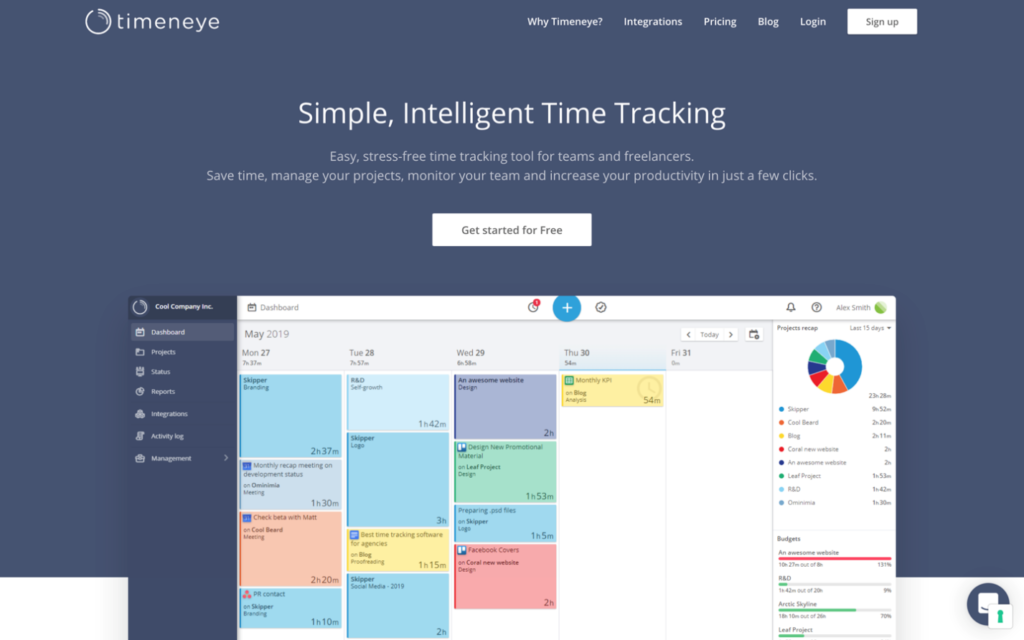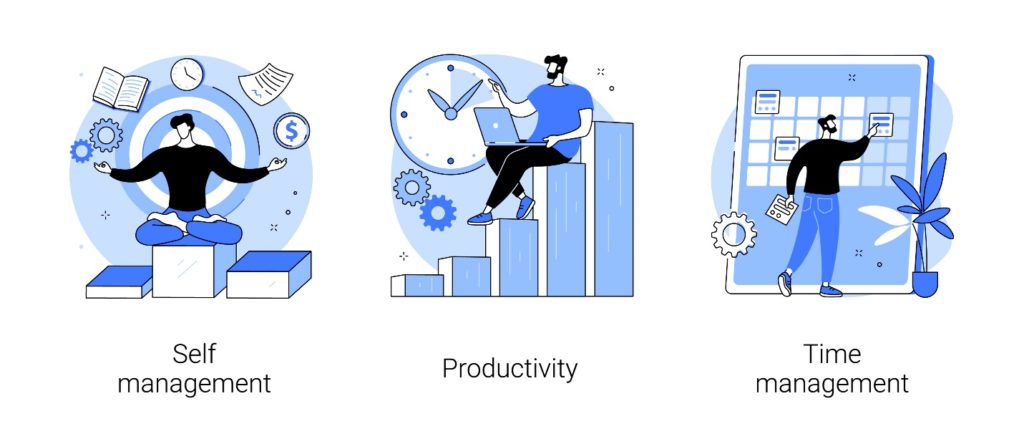How to introduce time tracking in your organization
Introducing time tracking in your company can be challenging. Here is a step-by-step guide to help you implement team time tracking effectively.

You know when we talk about actually implementing a time tracking system in any organization, most of the employees fret over it.
Let’s be honest.
People inherently don’t like the idea of someone breathing down their necks. However, when done in modesty – and that too, with an emphasis on productivity rather than accountability, at length, time tracking tools are known for their unlimited benefits.
This post highlights the significance of time tracking for professionals, such as; project manager working in an Agile setup, team leads responsible for managing multiple groups, etc.
And, while we are at it, let’s not forget the average Joe working remotely as a freelancer or a contractor who has his own team to fiddle with.

On average, people are known to be most productive for up to 6 hours on any given day.
Beyond that, employees start slacking, the productivity and drive diminish as hours go by – so on and so forth. Most of the professionals in any capacity, spend up to 1.5 hours reading and responding to important emails. This duration scales up as the designation and responsibilities of the said individual spike.
Technically speaking, reading emails is not a bad idea. It’s just that when there’s a huge volume of messages cozying up in your inbox, they have to be responded to – one way or another. However, the problem is that once you get to it, there’s a high chance that you might end up spending up to 3 hours engaged in the aforementioned collaborative activity.
… and that was just about spending extra time coordinating and collaborating via emails.
Pick any other activity, and you will realize that due to the sheer amount of focus needed to get things done, it’s easy to lose track of time.
Now comes the best part!
Many employees don’t track time at all! Top it off with a bunch of teams working together to bill clients via timesheets. Ironically, the untracked time results in a loss of revenue on a per-employee basis.

Oh yes, there’s that too.
When it comes to efficiency and time tracking, they are often hindered by unnecessary stand-up meetings. As an agile project manager, without name-calling, I can tell you that I have been to many organizations that hold such meetings sacred – and that too, on a daily basis.
What happens is that you end up spending a whopping 6 – 12 weekly hours on meetings without doing anything productive at all. The milestones are still there; task dependencies are screaming to be handled, while everyone scrambles to prepare for the next meeting coming day.
That’s Where Time Tracking Software Comes In:
Time tracking is supposed to be accepted as a ritual; something that’s part of your daily essentials as you go head-on against multiple projects and tasks for that matter.
Naturally, for those companies that have never implemented a formal time tracking tool or activity, employees are reluctant in adapting to the new curve. It takes “time”, but you know as they say: “there’s always light at the end of the tunnel.”
So how does a professional project manager go on about introducing time tracking to different teams?
There’s a special reason for companies incentivizing time tracking and monitoring via employee rewards. These rewards don’t have to be too much. Sometimes a small free Bohemian-style beer can do it as a token to any team that completes its timesheets for a given duration.
On a larger scale, it’s not that easy to implement such measures in a company that has never been exposed to time-tracking activities before.
Here’s what you can do as a professional to getting started the right way…

Pilot programs are best for testing any new agile practice without involving the entire company right away. For instance, you could implement time tracking on a single department and tally the results against each individual’s productivity and hours + money saved in the long run.
Employees must understand that time tracking tools are not merely for monitoring a person’s work activity. For companies, it’s about productivity and profitability, which can be best derived when a shift in perspective on employees’ behalf is set in place.
To that end, many departments are okay with participating in such pilot programs for as long as they seem genuinely interesting. For instance, the easiest way to implement such practices is by asking the department members to fill in their traditional timesheets that are handed out on a piece of paper. No need to use a software, if the teams aren’t up to it.
However, while you are at it as a department head or a project manager, don’t forget to send out a clear message that this system will grow as the entire team plays a pivotal role in helping other departments in the near future.
At the end of the activity, you can also ask for anonymous feedback from the respondents to get constructive input on implementing a company-wide time tracking policy without vaguely threatening any employees whatsoever.

Although there’s an abundance of benefits regarding time tracking and the overall efficiency factor, let’s just highlight some of them to give you an idea about how things can turn over a new leaf for your organization.
Since everyone is made aware of managing timesheets, the need for micromanaging employees reduces to a bare minimum. Everyone knows what they’re doing by realizing that “time is money”, not only for the organization but for each team member when it comes to claiming monetary incentives.
In that order, people become self-conscious about their performance and actually tend to care about how much time they’re really putting in. Many employees seize this mechanism as an opportunity to perform a retrospective analysis on their personal productivity vs time spent/ wasted on inefficient workflows.
This holds especially for those projects that are tied to meeting time-reserved milestones. If your client likes to be charged by the hour, the entire team working on your behalf knows that the projects’ timesheets need to be filled in accordingly to reflect workflow activity at the end of each billing cycle.
Timely payments from clients, lead to timely payroll dates for employees. It’s a win-win situation for both sides at the end of the day.
Rinse and repeat to an extent that it becomes second nature for your team, and/or company to quantify success through productive work hours.

Oftentimes, many companies end up hiring an extra bunch of people when it isn’t needed entirely.
Overstaffing usually happens when there’s a lack of time tracking and accountability on team members’ part. As work begins to slack, with the deadlines not being met on time, the company has no other choice but to bring in an extra pair of hands as a secondary resource for any number of projects.
Okay, then how about a trial by fire?
Sure, if you want to fire an employee that’s already working on a project, be as it may, it won’t reap positive results immediately.
Even if the said person is known for slacking, firing him/her by bringing in a replacement accounts for extra time and resources spent on training the new team member. Eventually, the workflow speed churns down to a snail’s pace because of the added time that new replacement(s) might need to get things up to full throttle.
In a nutshell, efficient time management reduces the requirement for overstaffing. The results are not overnight, but they do show up in a long-haul game for any company made up of professional team players.
At the end of the day, it comes down to the feasibility factor for companies. An organization can only make informed decisions if there’s enough data to demonstrate the efficacy of going for a “nay” or “yay” in unison.
Data-driven results are tied to productivity, hours saved, and minimum client churn throughout the tenure of a project. By helping employees to track their work hours, you are not only honing their skills to finish stuff on time, but also enabling the organization to depend on a stack of data-driven results that pile up slowly.
As a result, data-driven outcomes lead to generating better project estimates and reduced overhead expenses for future challenges.

Although tasks are known for reaching a halt in the absence of proper time tracking tools, you do need to realize that it’s not micromanagement. Time tracking is, in fact, a game of enabling and empowering fellow team members to assess their vulnerabilities and do better in the long run.
On that note, I am all up for ethically using time tracking tools with a responsibility to show for it. Those companies that go hands-on in implementing strict geofencing time tracking and monitoring employees’ browser and computer monitor activity, tend to do more harm rather than harnessing the spirit of productivity.
That being said, have you been a part of any company that made the transition toward efficient time tracking tools? If so, we’d love to hear from you in the comments section below.
Good luck, and have fun handling those projects like a champ!
Cover image by Marvin Meyer on Unsplash
Introducing time tracking in your company can be challenging. Here is a step-by-step guide to help you implement team time tracking effectively.
Acquire routines to plan and implement projects faster: remote project management can be easy and effective, with the right tools.
We’ll talk about how the OKRs methodology can be applied to a remote setting, and how to implement it correctly.